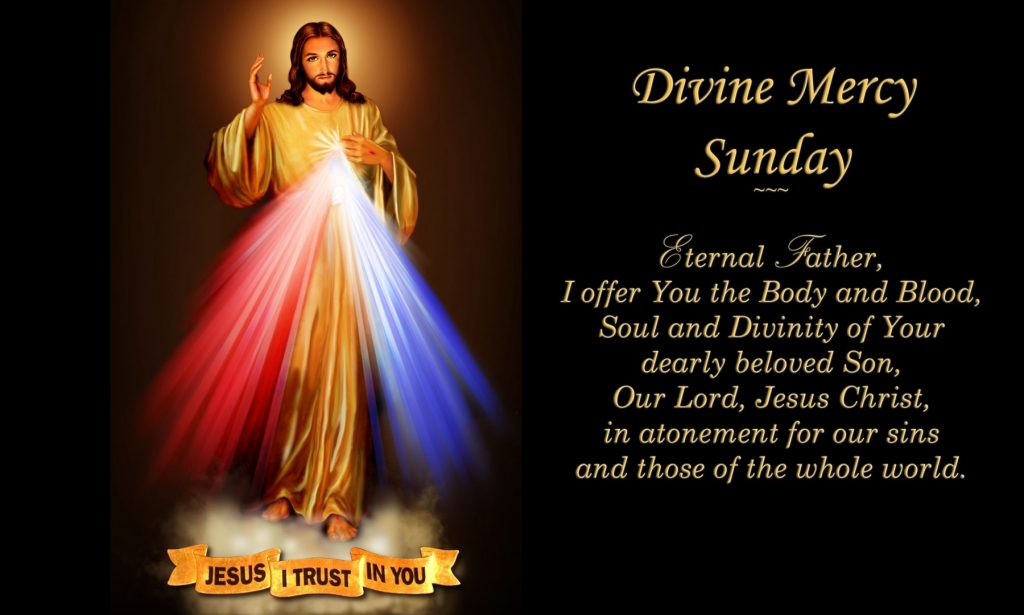|
Divine Mercy Sunday - A Brief History
St Faustina was a Polish nun who received powerful messages from Jesus. Jesus appeared to her frequently throughout her life and used her as a way to transmit the message of His Divine Mercy to others. In her diary, St Faustina describes in detail the image of Mercy that Christ instructed her to have painted: “The two rays denote Blood and Water. The pale ray stands for the Water which makes souls righteous. The red ray stands for the Blood which is the life of souls. These two rays issued forth from the very depths of My tender mercy when My agonized heart was opened by a lance on the Cross. These rays shield souls from the wrath of My Father. Happy is the one who dwells in their shelter, for the just hand of God shall not lay hold of him.” In 1934 St Faustina and her spiritual advisor sought out Eugeniusz Kazimirowski to paint the image (shown above) we all know and love. Jesus insisted when the work was completed that it be placed in chapels and venerated throughout the world. He promised that grace would come for those who meditated on the beautiful image. Pope Saint John Paul II was very passionate about the mission of revealing the Mercy of Jesus to the world. In the year 2000, at the canonisation Mass for Faustina, he announced that the Second Sunday of Easter would now be known as Divine Mercy Sunday. It must be made clear that this was not done in order to establish a way of honouring Faustina, but to emphasize the meaning of the Resurrection and the depths of God’s great Mercy and love that is made available to all of His creation. Divine Mercy Sunday is not a new feast day because the Second Sunday of Easter has always been a solemnity known as the Octave Day of Easter. The richness of the Mercy of God comes to us not only through St Faustina’s revelations, but also through scripture and the history and tradition of our Catholic Church. The feast of the Divine Mercy is the first Sunday following Easter Sunday. In St Faustina’s diary, Our Lord explains how to obtain the unique graces on Divine Mercy Sunday: 1) Go to Confession (20 days before, on, or after Divine Mercy Sunday);
|














